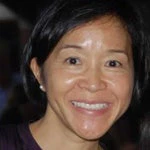
A new World Bank report, Voice and Agency: Empowering Women and Girls for Shared Prosperity, underscores the importance of enabling girls and women to fulfill their potential and make their voices heard. For women in the developing world who work in ministerial positions, are their voices being heard? The data shows us that more than 20% of elected ministers in Latin America and Sub-Saharan Africa are women.
Using data published in the World Bank’s Gender Data Portal, these two regions’ share of women in ministerial positions are a 10-percentage-point higher than other regions, an encouraging trend since 2005. For me, one really eye-opening insight is this: here are two regions with very different socio-economic characteristics: Latin America and the Caribbean, with mostly middle income countries and high levels of school enrollments, and Sub-Saharan Africa, where there is a majority of low income countries with lower levels of school enrollments. Yet they both have the highest level of female political representation compared to other regions.
Source: IPU: Women in Politics 2012 ( PDF | Data)
Drilling down to country level data reveals even more insightful patterns and disparities. The two leading regions dominate the countries with highest female share, but also have large disparities among countries, ranging from over 40 percent in Cabo Verde, Bolivia, Ecuador, Nicaragua, and South Africa to less than 6 percent in Belize, Guatemala, and Somalia. The rest of the regions show more uniformed distributions.
Source: IPU: Women in Politics 2012 ( PDF | Data)
What the above chart does not show is the thirteen countries that do not have any women in ministerial representation, and the country list ranges across income levels and regions. Of these thirteen countries that do not have any female ministers, five of them are high income countries.
Even with these recent improvements, men still largely dominate ministerial positions, and there is still a long way to go for gender equality. The indicator, proportion of women in ministerial level positions (%), illustrates the status of female representation in policymaking. As noted in the World Development Report on Gender Equality and Development, gender equality in decision making not only benefits women and girls, but also matters for society more broadly. Empowering women as economic, political, and social actors can change policy choices and make institutions more representative of a range of voices.
Additionally, the importance of gender equality is underscored by its inclusion as one of the eight Millennium Development Goals (MDGs). And gender equality is acknowledged as being a key to achieving the other seven goals.
For more indicators and data on gender, visit the aforementioned Gender Data Portal, your go to resource for gender data dashboards, MDG country progress monitoring, and much more, as well as the World Development Indicators.
-------------------------------------------------------
Indicator and code used in this post:
Proportion of women in ministerial level positions (%) SG.GEN.MNST.ZS



Join the Conversation